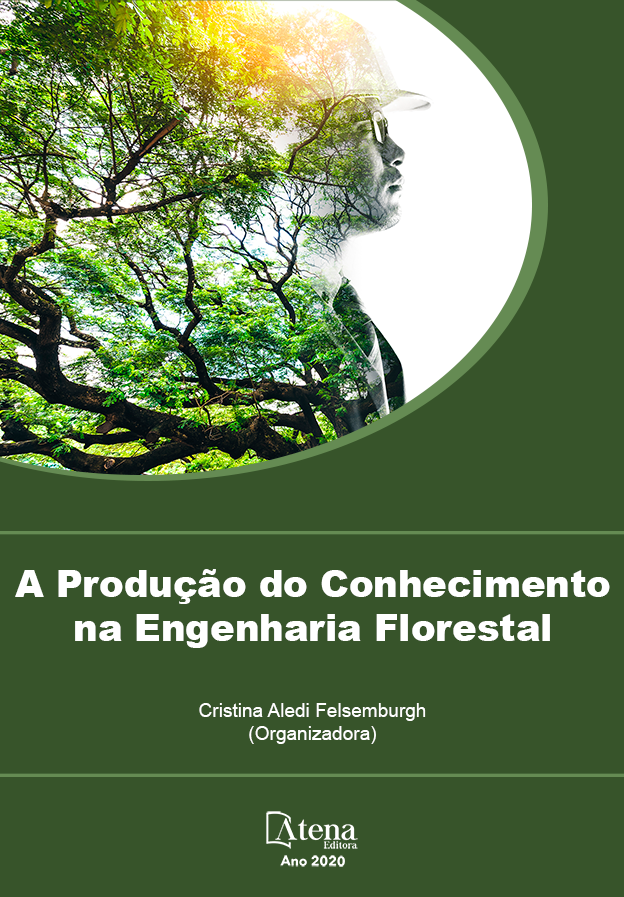
ESTOQUE DE CARBONO EM PLANTIOS DE RESTAURAÇÃO FLORESTAL, FLORESTAS SECUNDÁRIAS E MADURAS NA AMAZÔNIA
O bioma Amazônico tem papel importante para o ciclo do carbono, pois possui uma flora diversa, de grande porte e extensão territorial. Portanto, quantificar a biomassa e carbono estocado nesse bioma é fundamental para compreender o papel da floresta Amazônica no cenário das mudanças climáticas. Objetivou-se quantificar e comparar estoques de carbono em plantios de restauração florestal, regeneração natural e florestas maduras na Amazônia. Foram instaladas 40 parcelas em plantios de restauração florestal e áreas de regeneração natural no estado de Rondônia. Com base nessas parcelas foram derrubados e pesados 40 indivíduos, os quais representavam as espécies e classes diamétricas identificadas nas parcelas. Esses indivíduos foram compartimentados em biomassa da parte área (galhos, folhas e fuste) e biomassa subterrânea (raízes). As biomassas frescas foram determinadas em balança digital e amostras frescas de cada compartimento de biomassa foram separadas em campo para secagem em laboratório. Para as análises de teores de carbono, utilizou-se o equipamento LECO C-144. Os plantios de restauração florestal apresentam uma média de 26,56 Mg.ha-1 de carbono estocado aos 7 anos de idade, 23,35 Mg.ha-1 na parte aérea e 3,21 Mg.ha-1 nas raízes. Nas florestas secundárias, regeneradas naturalmente com até 10 anos, há um estoque de carbono de 32,13 Mg.ha-1, 28,24 Mg.ha-1 na biomassa aérea e 3,89 Mg.ha-1 nas raízes, enquanto as florestas maduras estocam cerca de 155,10 Mg.ha-1 de carbono. Existe grande potencial de sequestro de carbono dos plantios de restauração, os quais são a melhor opção tecnológica para sequestrar carbono e promover a rápida restauração do ecossistema.
ESTOQUE DE CARBONO EM PLANTIOS DE RESTAURAÇÃO FLORESTAL, FLORESTAS SECUNDÁRIAS E MADURAS NA AMAZÔNIA
-
DOI: 10.22533/at.ed.00620261013
-
Palavras-chave: Ciclagem de carbono; Desmatamento; Mudanças climáticas; Sustentabilidade.
-
Keywords: Carbon cycle; Deforestation; Climate change; Sustainability.
-
Abstract:
The Brazilian Amazon biome is indispensable for the carbon cycle, since it has a complex flora and a large territorial extension. Thus, it is necessary to quantify the biomass and carbon stored in this biome in order to understand the importance of the Amazon rainforest in the climate change scenario. The aim was to quantify and compare carbon stocks in forest restoration stands, natural regeneration and mature forests in the Amazon. 40 permanent plots were installed in forest restoration stands and natural regeneration areas in the state of Rondônia. Based on these plots 40 individuals were harvested and weighed, which represented the species and diametric classes that were identified in the plots. These individuals were fragmented into aerial biomass (branches, leaves and stem) and underground biomass (roots). Fresh biomass was determined on a digital balance and fresh samples from all biomass compartments were separated in the field for laboratory drying. The analysis of carbon contents was performed using the LECO C-144. The forest restoration stands have a mean of 26.56 Mg.ha-1 of stored carbon, 23.35 Mg.ha-1 in the aerial part and 3.21 Mg.ha-1 in the roots. In secondary forests, naturally regenerated, there is a carbon stock of 32.13 Mg.ha-1, 28.24 Mg.ha-1 in the aerial biomass and 3.89 Mg.ha-1 in the roots, while mature forests stock approximately 155.10 Mg.ha-1 of carbon. There is a high potential for carbon sequestration from restoration stands, which are the best technological solution to sequester carbon and provide fast ecosystem restoration.
-
Número de páginas: 15
- Carlos Roberto Sanquetta
- Emmanoella Costa Guaraná Araujo
- Gabriel Mendes Santana
- Alexis de Souza Bastos
- Marcelo Lucian Ferronato
- Mateus Niroh Inoue Sanquetta
- Ana Paula Dalla Corte
- Ernandes Macedo da Cunha Neto


